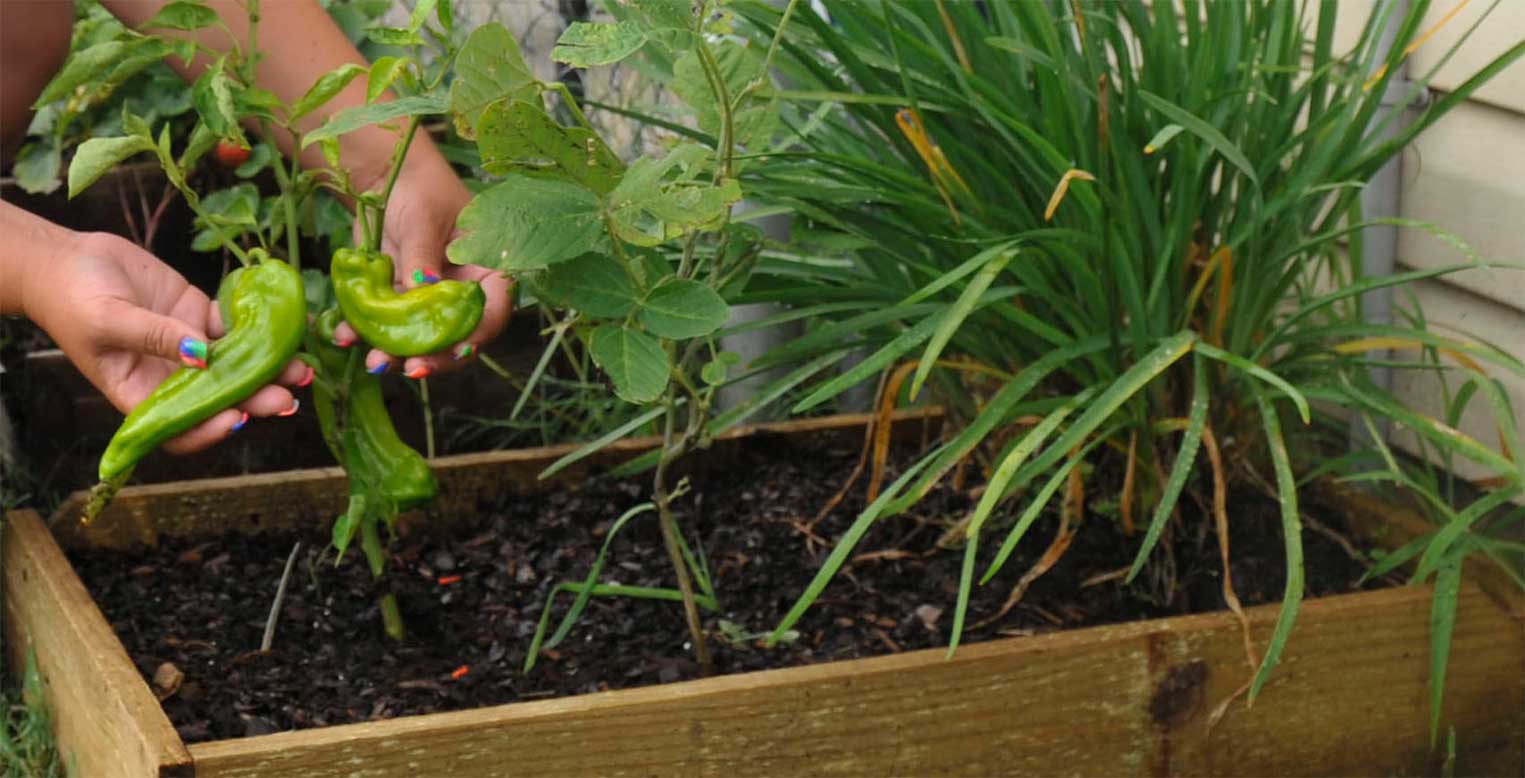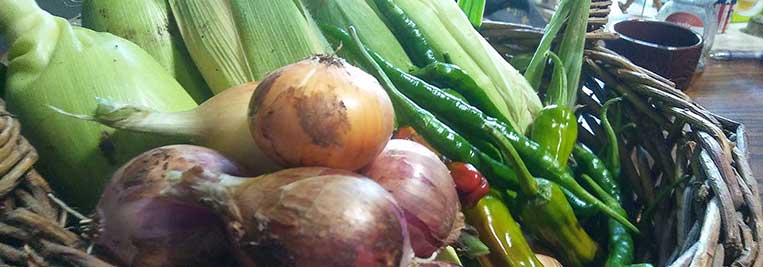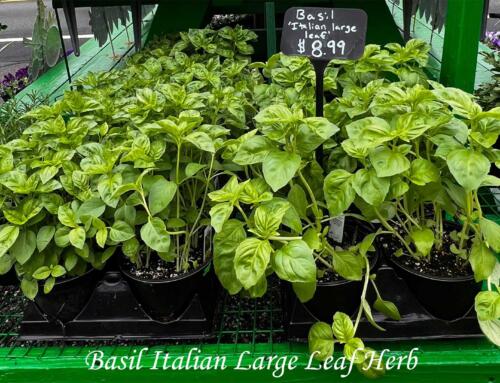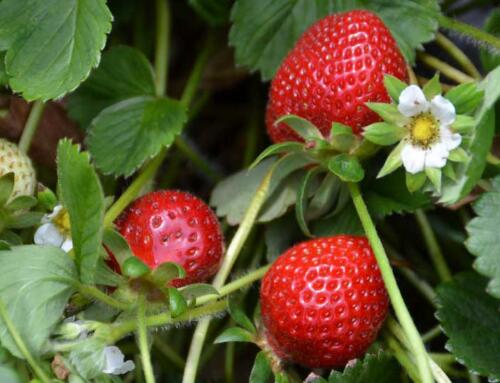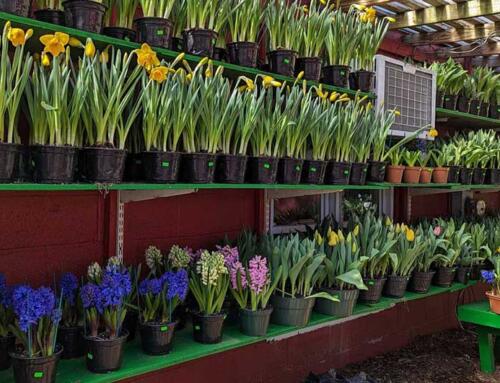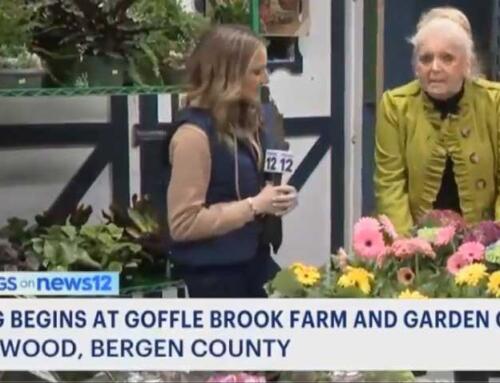Container Gardening Success
“Everything that slows us down and forces patience, everything that sets us back into the slow circles of nature, is a help. Gardening is an instrument of grace.”
a container gardening primer
by Donna Dorsey
Pots and planters are for more than just decoration – container gardening can be a great way to grow vegetables easily and successfully. Container gardening is also a great and educational way to interact with children, after all what child doesn’t like getting their hands dirty and learning at the same time? 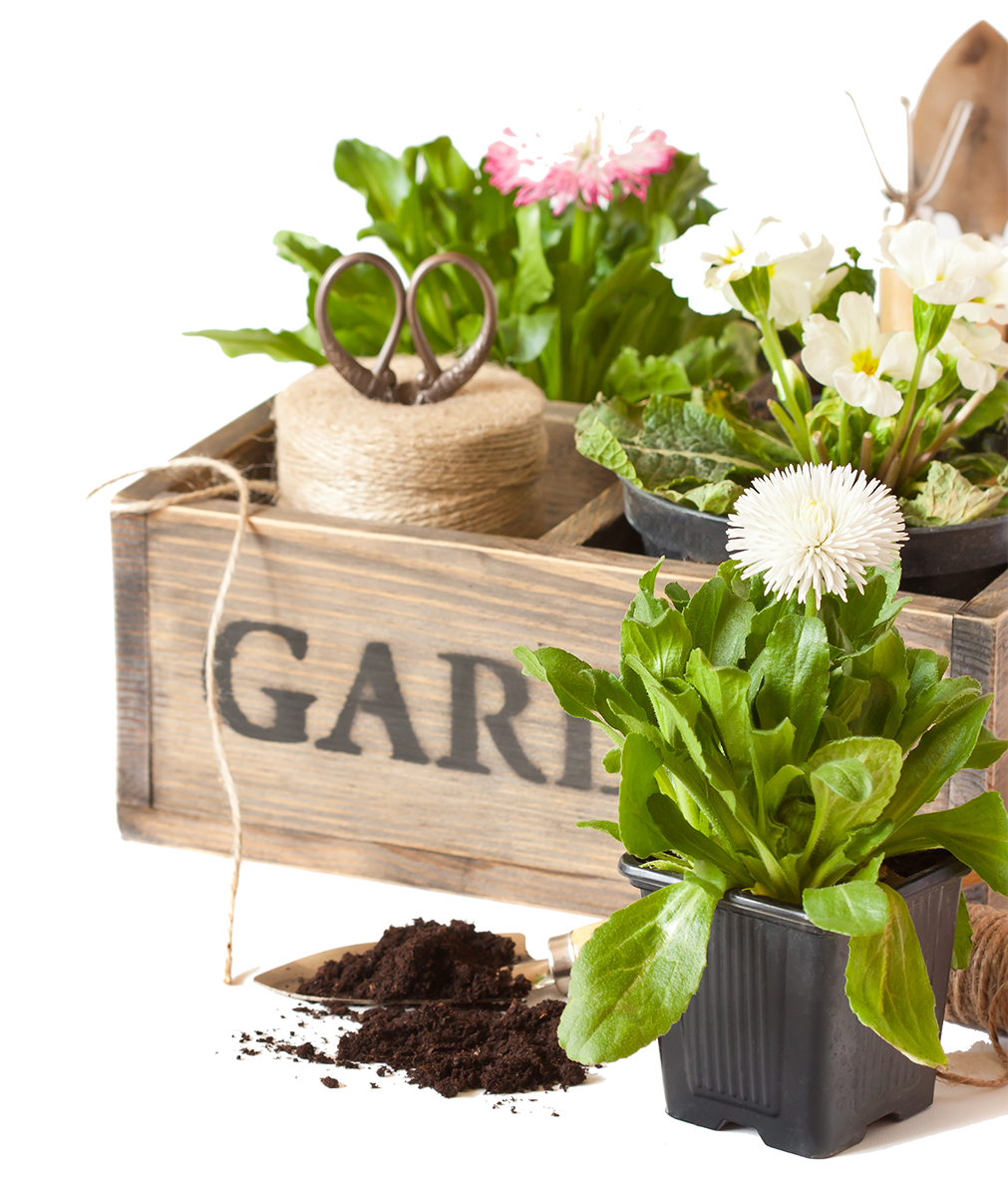 And what better to dress up any outdoor living area than stunning containers brimming with blossoms and bounty. You can incorporate a container herb garden area somewhat near your outdoor grilling area and have the freshest of herbs and delicacies to satisfy and gourmet’s whim.
And what better to dress up any outdoor living area than stunning containers brimming with blossoms and bounty. You can incorporate a container herb garden area somewhat near your outdoor grilling area and have the freshest of herbs and delicacies to satisfy and gourmet’s whim.
Growing veggies in containers is different than traditional gardening, however, and if you want the very best harvest, you need to be sure you are using not only the proper container gardening techniques to nurture every vegetable you plant, but also the proper container. In this day of urban gardening this often means growing on rooftops, balconies, patios, alleyways, sidewalks or whatever space the gardener has available. Gardeners with physical disabilities find that growing vegetables in containers makes them far easier to reach and tend.
Growing edible plants in containers does come with its own special challenges however, so if you want to succeed it pays to plan ahead. Granted you can plant almost anything in a container and dependent upon the type of container and care received and it will grow, there are however certain vegetables that grow and bear fruit more than others. These vegetables are inclusive of but not limited to:
Asparagus
Beans
Beets
Broccoli
Carrots
Cauliflower
Cucumbers
Eggplant
Kale
Lettuce
Onions
Peas
Peppers
Radishes
Summer squash
Tomatoes
Turnips
Zucchini
Some varieties of fruit also do very well in containers. These include cantaloupes, strawberries and raspberries, and dwarf varieties of citrus and apple trees. Then there are the herbs basil, parsley, oregano, rosemary and thyme which thrive in containers, allowing you to plant a delicious garden with all the seasonings you need, all in the pots you prefer.
First things first, there’s more to container vegetable and flower gardening than just plopping a seed or two in a small divot, brushing a thin layer of soil over it, giving it a drink of water and waiting for Mother Nature to do her magic. You need the right container for the plant.
Vegetables, and any plant for that matter, need a container with adequate drainage to prevent root rot, and of a size that is large enough to allow for adequate root growth. Choose a pot based on the mature size of the vegetables you will be growing, and consider different pot materials as well based on durability, weight and how quickly they may dry out after watering. Also bear in mind that container color also plays a key factor in a plants growth as a black container will heat up much more than a light colored container, and as it gets hotter so does the soil within, drying out faster.
Use Good Potting Soil
Garden soil is not suitable for use in containers, since it is too dense and compacted for plants to grow well in confined spaces. A good quality potting soil should contain large proportions of compost, perlite, vermiculite or other organic material, and have a “fluffy” consistency for good water retention, aeration and root growth.
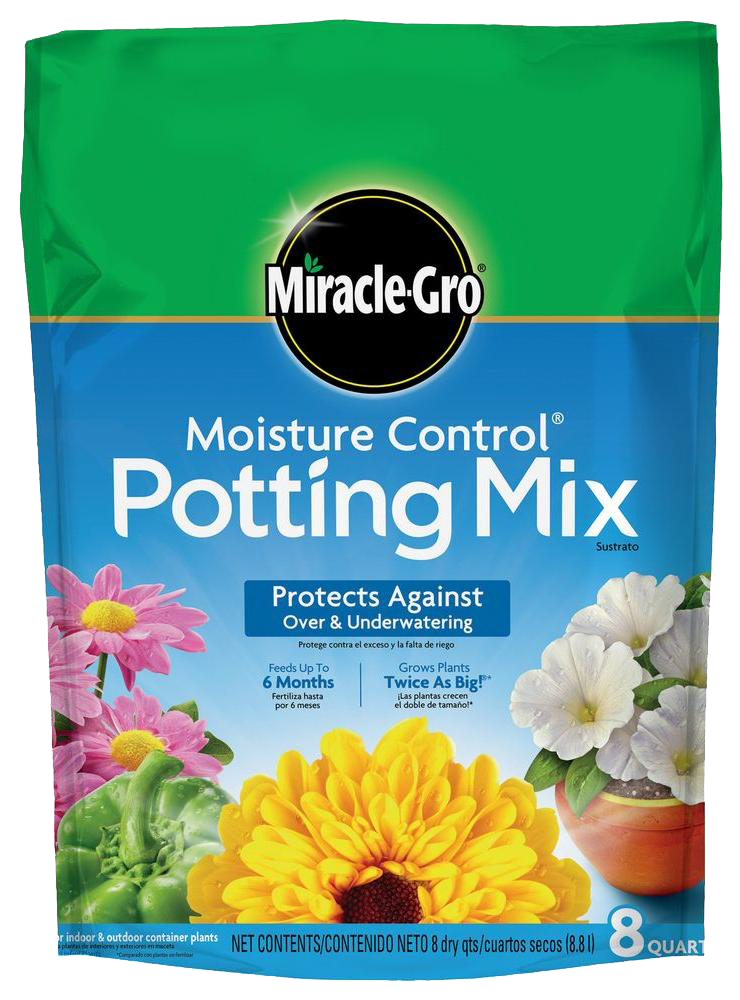 At the garden center we offer Moisture Control Potting Mix by Miracle Gro, which absorbs 33% more water than ordinary potting soil and can feed plants for up to 6 months. Growing mediums (soils) within a container require a well aerated and good draining soil while be able to maintain enough of the moisture to promote and sustain plant growth and production of fruit.
At the garden center we offer Moisture Control Potting Mix by Miracle Gro, which absorbs 33% more water than ordinary potting soil and can feed plants for up to 6 months. Growing mediums (soils) within a container require a well aerated and good draining soil while be able to maintain enough of the moisture to promote and sustain plant growth and production of fruit.
When filling containers with your growing medium and soil amendments, do not fill the pot completely up to the top. Instead leave about an inch to an inch and a half space between the top of the soil and rim of the pot. This makes watering the pot easier as it provides a place to pool the water, wait a spell for it to properly drain and then re-water to sufficiently obtain a moist but not wet soil thoroughly throughout the container and not have it run over the edge.
When it comes to staved barrels and larger containers, filling them completely with growing medium can get a tad on the “expensive” side. To reduce the cost and also the weight of the container consider adding “filler” to the bottom of the container to take up space. Many things can be used, but they should be something that is inert, able to take up space and not break down over the course of the growing season. Often the depth of the container is beyond the plant’s growth depth for the entire season, so you want be taking anything away from the plant by doing so. Just make sure you leave an adequate depth with regards to your soil.
Light and Temperature / Positioning Containers
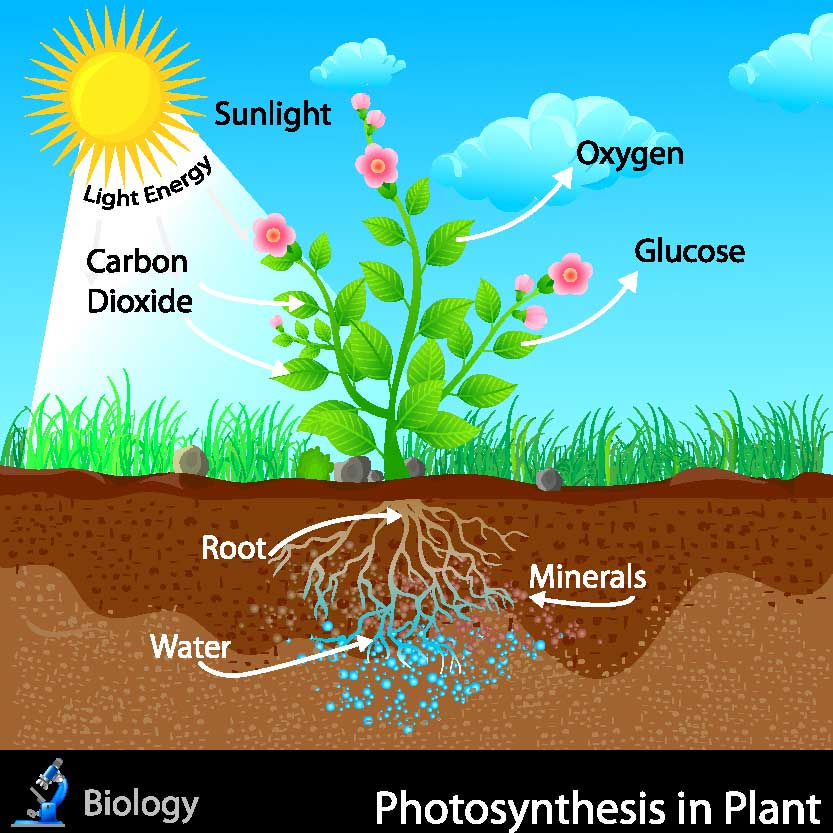 Light and temperature are key environmental factors to successfully growing and maintaining plants whether they are in the ground or in containers. Herein is a key element as containers offer the advantage of being portable. As the seasons, temperature and light conditions change, so can the location of your containers. You just move them to the designated area of your beds for for peak performance.
Light and temperature are key environmental factors to successfully growing and maintaining plants whether they are in the ground or in containers. Herein is a key element as containers offer the advantage of being portable. As the seasons, temperature and light conditions change, so can the location of your containers. You just move them to the designated area of your beds for for peak performance.
So it is of the utmost that you know the growing requirements for the plants you wish to grow, whether they are patio tomatoes which thrive during long sunny days or perhaps a patio display of large hostas in a container that can burn in the full sun. If relocating containers is not possible for some reason then changing the plants to match the temperature and light conditions is the answer.
Vegetables grow best in full sun, with six or more hours of sunlight per day. Containers are also easy to set in decorative wagons so that they can be easily moved during the day or as the growing season changes, allowing for adequate sunlight. Do not crowd containers too tightly together, however, as plants also require good air circulation for healthy foliage and space to grow that foliage.
Water Plants Adequately
Containers will dry out more quickly than a garden plot, and thirsty vegetables may need to be watered multiple times per day on the hottest days. When the top inch of soil in the container is dry, it must be watered. Installing a drip system in a series of containers is an efficient way to keep these vegetables watered without wasting water.
 This can be accomplished simply by placing a (pre-cut to the depth of the container) piece of 1/2 inch pvc pipe that is pre-drilled with small holes. Simply water down the top of the pvc and water is easily distributed throughout the entire root system.
This can be accomplished simply by placing a (pre-cut to the depth of the container) piece of 1/2 inch pvc pipe that is pre-drilled with small holes. Simply water down the top of the pvc and water is easily distributed throughout the entire root system.
When it comes to rules of thumb the best way to tell if a plant needs water is to feel the soil. And if the first inch or so of the soil is dry, water. Apply enough water each time so the whole soil ball becomes moist. This means using enough water each time so water starts to drip out of the drainage holes.This assures you have gotten the whole soil mass moist.
How often you need to water a container varies depending on the time of the year, location of the container, how long the container has been planted, type of container, and type of plant material. There are no hard and fast rules when it comes to watering. so do as I do and take a casual stroll through your beds on a daily schedule, all the while admiring your rewarding efforts at gardening.
Fertilize Vegetables Appropriately
Container-grown vegetables typically require additional fertilization to reach their full potential for a bountiful harvest. Choose the fertilizer appropriately for the vegetables you are growing. Follow all application instructions carefully for the best results.
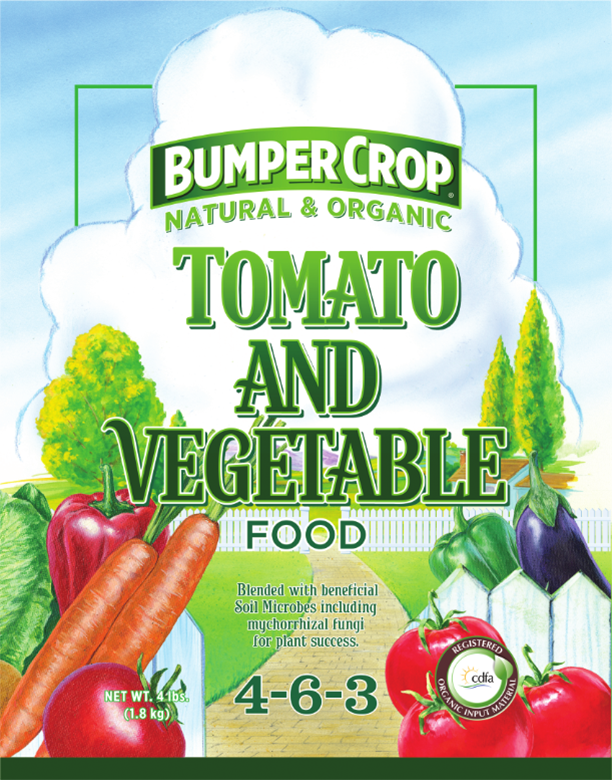
Bear in mind also that frequent watering can result in the leeching of these nutrients and as such a regular fertilizer program is needed to keep plants growing well and attractive all season.
The choice of fertilizer analysis will depend on the kinds of plants you are growing. High nitrogen sources would be good for plants grown for their foliage while flowering and vegetable crops would prefer lower nitrogen and higher phosphorous types.
Our select fertilizer that we carry is Bumper Crop Organic Soil Amendment. A premium soil builder created exclusively by MASTER NURSERY® Garden Centers, BUMPER CROP® SOIL BUILDER contains only the finest all natural, rich, organic composted ingredients. Working with the Master Nursery soil committee Coast of Maine reformulated the terrific Bumper Crop Organic Soil Amendment and super charged it with Mycorrhizae, Worm Castings, Kelp Meal and Dehydrated Poultry Manure.
Provide Support If Needed
Taller vegetables may need additional support when grown in containers to be sure they do not sag, tip or fall as they become top-heavy. Different types of supports such as cages, trellises, wires or stakes can all be suitable, depending on the vegetable. Always make sure that the container is big and heavy enough so it will not tip over as the plant gets heavier on top.
Whatever you choose as a support make sure to insert the support in the container before you plant the vine so that it is there and waiting for the vine to climb on. Choose a support based on the vigor of the plant. Many container vines quickly out grow their support because the garner didn’t realize how big the vine would get and make sure it is firmly anchored.
Keep an Eye Out for Pests
In general, container-grown vegetables are less susceptible to plants, fungus and diseases, but these problems can still strike, and because the plants are more confined, an infestation can be drastically destructive and quick to unfold.
Keep an eye out for any signs of pest infestations and or foliage conditions that don’t appear right and take action immediately to rectify the situation. Also if you have any problems with wildlife such as deer, rabbits, voles and such there are a multitude of garden repellents available at our garden center. For more information visit our repellents page.
Harvest Early and Often
If you keep harvesting your vegetables when they are optimally ripe, your plants will continue to produce edibles all season long. However, if you let them go to seed then expect a drop in productivity which they may not recover from. Harvest your first edibles as soon as they are large enough for you to use, and continue harvesting regularly to encourage more production and a longer harvesting season.
It can take some trial and error to get started container gardening for vegetables, but with a bit of practice, your container-grown harvests can be just as varied, productive and delicious as any traditional garden plot.
I can’t wait to get started. Alas, in the meantime, where’s another gardening book to peruse?
See ya soon.
General Recommendations for
Growing Vegetables in Containers
In 2008 and 2009, the Penn State Southeast Research and Extension Center (SEAREC) near Lancaster, PA and the Franklin County Horticulture Education Center in Chambersburg, PA hosted extensive trial plantings of fruiting vegetables in containers. This program was in response to increased consumer interest in vegetable gardening coupled with many years of related interest in ornamental container planters. Seeds for the trial were purchased from most of the major seed companies. Any tomato, pepper, eggplant, cucumber, or squash that was described in company catalogs or on seed packages in garden stores as ideal for containers or compact was eligible and included in this program.
Generally, all of the plants experienced some measure of success. Peppers, tomatoes and eggplant best fit the space provided by the pot, so work best in confined areas. Cucumbers perform very well, but will produce vines that quickly exceed the size of the pot. Winter squash, summer squash, and zucchini rapidly outgrow their pots and take up large areas. This first fact sheet will deal with generalities of growing vegetables in containers. Other fact sheets in this series will provide specific recommendations and comments for tomatoes, peppers, eggplant, cucumber and squash for the varieties that have been in our trials including pest management and fertilization.

